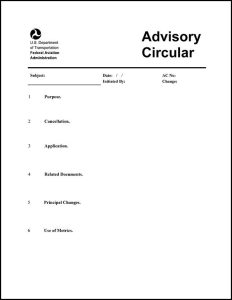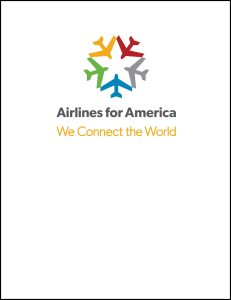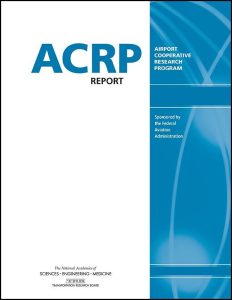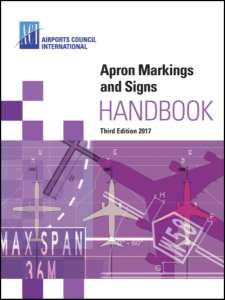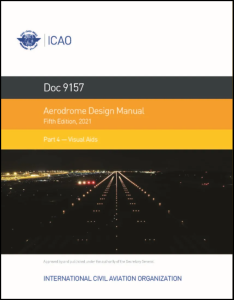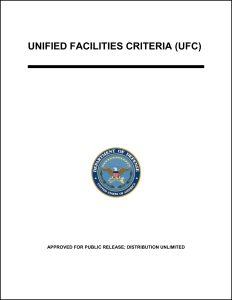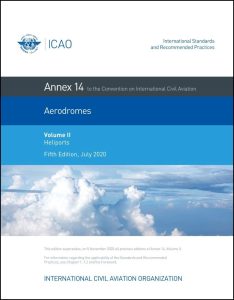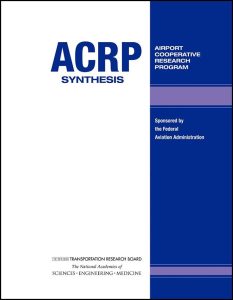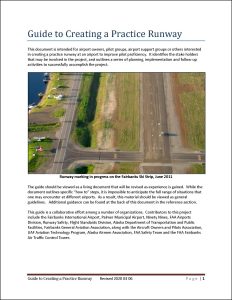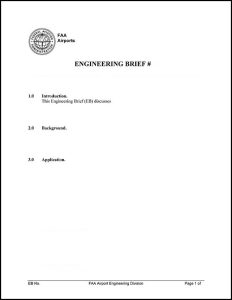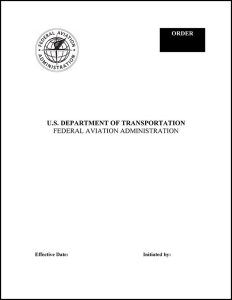To narrow the library of airside resources, use the filter boxes or airport map below or search box above.
Click an item below to expand.
Resources Matching Your Search
2020
This advisory circular (AC) contains FAA standards for markings used on airport runways, taxiways, and aprons. The runway markings addressed include landing designator, centerline, threshold, aiming point, touchdown zone, edge, threshold bar, displaced threshold, hold position, chevrons for blast pads, stopways, engineered material arresting system (EMAS), and shoulder markings.
2020
This document provides a comprehensive guide to safe driving on the airport surface. It was created for drivers of tugs, fuel trucks, baggage carts, or other airport vehicles. It focuses on five areas—airport basics; airfield signs, markings and lighting; towered airports; non-towered airports; and aviation phraseology.
2017
Although numerous standards and recommended practices for pedestrian and aircraft ground movement have been developed over time, only limited guidance is available regarding ground support equipment movement, parking on the ramp, and aircraft engine intake hazard zones. The document is offered for free through the A4A website and is emailed for download after a no-cost purchase process.
2021
This resource is a webpage that provides information on the Electronic Code of Federal Regulations (e-CFR) Title 14, Chapter I, Subchapter G, Part 139, which contains guidance on certification, airport certification manual, and operations.
2017
This advisory circular (AC) sets forth guidelines for operational safety in airports during construction. This AC assists airport operators in complying with Title 14 Code of Federal Regulations (CFR) Part 139, Certification of Airports. For those certificated airports, this AC provides one way, but not the only way, of meeting those requirements. The use of this AC is mandatory for those airport construction projects receiving funds under the Airport Improvement Program (AIP). Chapters include planning an airfield construction project, construction safety phasing plans (CSPP), and guidelines for writing a CSPP. Included in the appendices are a safety and phasing checklist and a construction project daily safety inspection checklist.
2013
ACRP Report 96 provides best practices for planning, designing, and marking apron areas for all sizes and types of airports in the United States. Apron planning and design considerations include facility geometrics, aircraft maneuvering, apron/airfield access points, operational characteristics, markings, lighting, and aircraft fleets. The report summarizes apron planning and design best practices for incorporating flexibility, increasing efficiency, and enhancing the safety of apron facilities.
2017
This updated version of the Apron Markings and Signs Handbook includes best practices for the application and maintenance of paint markings on aprons. The aim of the handbook is to promote the commonality of markings worldwide and the increasing acceptance and application of these practices, leading to a safer apron environment. These markings and signs supplement those provided in ICAO Annex 14, Volume I, and the ICAO Aerodrome Design Manual, Part 4 (Visual Aids). This resource is available from the ACI store for $180 for members and $1,000 for non-members.
2015
The purpose of the ACI Apron Safety Handbook was to update and expand Chapter 2 of the Airside Safety Handbook (fourth edition). Aprons are the most congested and busiest areas of an airport, with complex activities that are carried out under severe space and time constraints. This handbook provides best practices for planning and designing apron layouts and facilities. It also provides standard operational practices for safe apron operations as well as mitigation and prevention measures for maintenance and construction activities on aprons. This resource is available from the ACI store for $125 for members and $1,000 for non-members.
2020
Part 2 assists countries in the implementation of the specifications for the design of taxiways and helps ensure their uniform application. This resource includes material on the general layout and description of updated design criteria for taxiway physical characteristics, including the shoulder and strips. This resource is available at the ICAO store for $200.
2020
This advisory circular (AC) describes the standards and provides guidance in the development of a surface movement guidance and control system (SMGCS) plan for U.S. airports, in which scheduled air carriers are authorized to conduct operations when the visibility is less than 1,200 feet runway visual range (RVR). An SMGCS plan facilitates the safe movement of aircraft and vehicles on the airport by establishing more rigorous control procedures and requiring enhanced visual aids.
2020
Part 4 provides information on the proper design and installation of visual aids, which are prerequisites for the safety of airport operations. Some of the topics covered are the functional requirements of visual ground aids, surface marking and markers, approach lighting systems, light characteristics for precision approach runways and taxiways, runway lead-in lighting systems, runway and taxiway lighting, surface movement guidance and control systems, taxiing guidance signs, and obstacle lighting. This resource is available at the ICAO store for $250.
2020
This manual provides standardized airfield, heliport, and airspace criteria for the geometric layout, design, and construction of runways, helipads, taxiways, aprons, landing zones (LZs), short takeoff and vertical landing (STOVL) facilities, unmanned aircraft system (UAS) facilities, and related permanent facilities to meet sustained operations for U.S. Army, Navy, Air Force, and Marine Corps airfields.
2020
Volume II of Annex 14 contains standards and recommended practices (specifications) that prescribe the physical characteristics and obstacle limitation surfaces to be provided for at heliports, and certain facilities and technical services normally provided at a heliport. This document is available at the ICAO store for $96.
2015
ACRP Report 138, Volume 1: Primer, explores the value of airports to communities and the national airspace system. The primer reviews the various infrastructure assets at airports and outlines the value of planning and prioritizing preventive maintenance into the budgeting process and the impacts to operations if an airport fails to conduct preventive maintenance. It also identifies basic principles for establishing and implementing a preventive maintenance program.
2015
ACRP Report 138, Volume 2: Guidebook, is designed to assist airport and maintenance management, as well as all staff responsible for maintenance and repair of the airport's physical infrastructure assets, in understanding preventive maintenance programs. The guidebook also contains a CD-ROM that includes system checklists that airport staff can customize for their use, as well as a PowerPoint presentation that can be shown to governing boards or communities on the importance of budgeting for preventive maintenance.
2008
ACRP Synthesis 11 explores the impacts of four common rubber removal methods on runways: waterblasting, chemical removal, shotblasting, and mechanical means (including sand blasting, scraping, brooming, milling, and grinding).
2013
ACRP Synthesis 49 highlights comprehensive safety and security training resources as well as successful practices for new maintenance hires at general aviation airports. The objectives are to locate information on training new hires, identify current practices and challenges, document core training elements and resources, and identify resources that may help raise knowledge and understanding on the airport campus and its operating environment.
2020
This document is intended for airport owners, pilot groups, airport support groups, or others interested in creating a practice runway at an airport to improve pilot proficiency when flying into a location with a bush runway.
2007
Engineering Brief (EB) 72A provides guidance for identifying situations where a taxiway could be mistaken for a runway and provides mitigation strategies for dealing with the problem. These standards and recommendations will be incorporated into changes in several advisory circulars, including 150/5300-13, Airport Design, 150/5340-30, Design and Installation Details For Airport Visual Aids, and 150/5340-1, Standards for Airport Markings.
2020
This order prescribes the standards for use by the Air Traffic Organization (ATO), Flight Standards (FS), and Airports Safety and Standards (AAS) in approving and conducting land and hold short operations (LAHSO). It also establishes the terms of reference, conditions, and limitations for the application of LAHSO. This order provides procedures to be applied when LAHSO clearances are being issued to Title 14, Code of Federal Regulations (CFR), parts 91, 121, 125, 129, and 135 aircraft operators.
